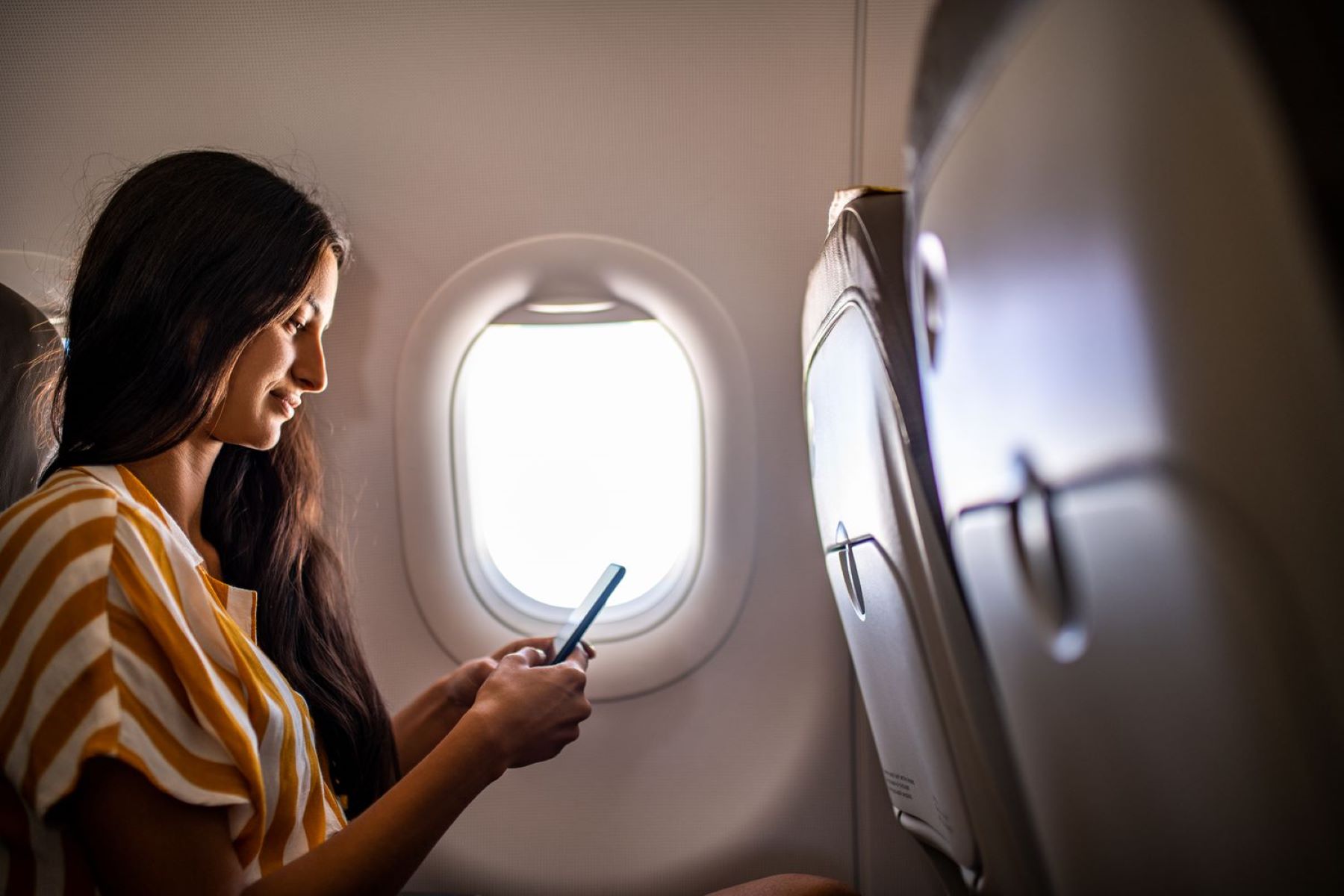Home>Travel and Places>Pilots’ Secret Techniques To Tackle Turbulence And Keep Passengers Calm


Travel and Places
Pilots’ Secret Techniques To Tackle Turbulence And Keep Passengers Calm
Modified: April 1, 2024
Discover expert pilots' strategies for handling turbulence and ensuring passenger comfort. Learn the secrets to a smoother travel experience. Explore more travel tips and techniques.
(Many of the links in this article redirect to a specific reviewed product. Your purchase of these products through affiliate links helps to generate commission for Regretless.com, at no extra cost. Learn more)
Table of Contents
Introduction
Turbulence, the bane of nervous flyers and the unwelcome jolt that can turn a smooth flight into a nerve-wracking experience. For many passengers, encountering turbulence triggers a surge of anxiety, leading to white-knuckled grips on armrests and fervent prayers for the plane to return to calm skies. However, what if there were secrets known only to pilots that could demystify turbulence and unveil the techniques used to navigate through these invisible air pockets with finesse and expertise? This article aims to delve into the world of turbulence, uncovering the hidden strategies employed by pilots to tackle this natural phenomenon. By gaining insight into these techniques, passengers can gain a deeper understanding of turbulence and, in turn, find reassurance during their future flights.
Turbulence, often likened to a rollercoaster ride, can be unsettling for passengers who are not familiar with the science behind it. The abrupt shifts in altitude and unexpected movements of the aircraft can evoke a sense of unease, especially for those with a fear of flying. However, turbulence is a natural occurrence caused by various factors, including atmospheric pressure changes, jet streams, and air movement around mountains. Understanding the root causes of turbulence is the first step in demystifying this phenomenon and alleviating the fear associated with it.
In the following sections, we will explore the intricacies of turbulence and unveil the techniques employed by pilots to navigate through turbulent conditions. By shedding light on these hidden strategies, passengers will gain valuable insights into the measures taken by pilots to ensure a safe and smooth flight experience. Moreover, we will also delve into the methods used by pilots to keep passengers calm during turbulent encounters, offering a comprehensive understanding of how aviation professionals manage these challenging situations.
Prepare to embark on a journey into the world of aviation, where the secrets of turbulence are unveiled, and the techniques employed by pilots are brought to light. By the end of this article, readers will gain a newfound appreciation for the expertise and skill of pilots in navigating through turbulent skies, ultimately fostering a sense of confidence and reassurance during their future travels.
Understanding Turbulence
Turbulence, often described as the "bumps" experienced during a flight, is a natural occurrence that stems from various atmospheric factors. Understanding the science behind turbulence is crucial in demystifying this phenomenon and alleviating the fear associated with it. Turbulence can be categorized into three main types: convective, mechanical, and frontal.
Convective turbulence is commonly encountered during fair weather conditions, particularly in the vicinity of cumulus clouds. As the sun heats the Earth's surface, pockets of warm air rise, leading to vertical air movements that can cause turbulence. Mechanical turbulence, on the other hand, is prevalent near mountains, buildings, and other obstructions that disrupt the smooth flow of air. When wind encounters these obstacles, it creates turbulent eddies and fluctuations in airspeed, resulting in the characteristic jolts felt by passengers. Frontal turbulence occurs along weather fronts, where contrasting air masses collide, leading to turbulent air movements and changes in atmospheric pressure.
In addition to these types, clear-air turbulence (CAT) is a particularly challenging form of turbulence as it occurs in cloudless skies, making it difficult to detect and forecast. CAT is often associated with jet streams and can catch both pilots and passengers off guard. The invisible nature of CAT underscores the importance of advanced forecasting and the implementation of strategies to mitigate its effects.
Understanding the underlying causes of turbulence is essential for both pilots and passengers. By comprehending the atmospheric conditions that give rise to turbulence, individuals can gain a sense of control and rationalize the natural occurrence of these air disturbances. Moreover, knowing that turbulence is a regular part of flying can alleviate anxiety and foster a greater understanding of the dynamic nature of the atmosphere.
In the next sections, we will delve into the techniques employed by pilots to navigate through turbulent conditions, shedding light on the measures taken to ensure a safe and smooth flight experience. By gaining insight into these strategies, passengers can develop a deeper appreciation for the expertise and precision involved in piloting an aircraft through challenging atmospheric conditions.
Pilots' Techniques for Tackling Turbulence
Pilots are equipped with a repertoire of techniques to navigate through turbulent conditions, ensuring the safety and comfort of their passengers. When faced with turbulence, pilots rely on a combination of skill, experience, and advanced technology to mitigate its effects and maintain a stable flight. These techniques encompass a multifaceted approach, encompassing both proactive measures and real-time adjustments to counter the challenges posed by turbulent air movements.
One of the primary techniques employed by pilots when encountering turbulence is to adjust the aircraft's speed and altitude. By carefully monitoring weather reports and utilizing real-time weather radar systems, pilots can anticipate turbulent areas and make preemptive adjustments to the aircraft's speed and altitude. Slowing down the aircraft's speed can reduce the impact of turbulence, providing a smoother ride for passengers. Additionally, altering the aircraft's altitude to navigate above or around turbulent areas can minimize the effects of turbulent air currents, enhancing the overall comfort of the flight.
Furthermore, pilots utilize their expertise in aerodynamics to maneuver the aircraft through turbulent conditions. By making subtle changes to the aircraft's control surfaces, such as the ailerons, elevators, and rudder, pilots can counteract the effects of turbulence and maintain stability. These adjustments are executed with precision, allowing the aircraft to respond to turbulent air movements while ensuring a steady and controlled flight path.
In addition to these techniques, modern aircraft are equipped with advanced systems designed to detect and respond to turbulence. For instance, turbulence-detection radar systems enable pilots to identify turbulent areas ahead and make informed decisions regarding flight path adjustments. Furthermore, aircraft with sophisticated flight control systems can automatically adjust control surfaces to counteract the effects of turbulence, enhancing the aircraft's stability and passenger comfort.
Moreover, pilots communicate with air traffic control and fellow crew members to gather real-time information about turbulence. This collaborative approach allows pilots to receive updates on weather conditions and turbulence reports from other aircraft, enabling them to make informed decisions and adapt their flight plan accordingly.
By combining these techniques and leveraging their expertise, pilots adeptly navigate through turbulent conditions, ensuring a safe and seamless flight experience for passengers. The comprehensive approach to tackling turbulence underscores the dedication and proficiency of pilots in managing challenging atmospheric conditions, ultimately instilling confidence and reassurance among passengers.
In the subsequent section, we will explore the strategies employed by pilots to keep passengers calm during turbulent encounters, shedding light on the measures taken to maintain a serene and composed cabin atmosphere.
Keeping Passengers Calm
Maintaining a calm and composed cabin atmosphere during turbulent encounters is a top priority for pilots and cabin crew. The well-being and comfort of passengers are paramount, and a range of strategies are employed to alleviate anxiety and foster a sense of reassurance amidst turbulent conditions.
Communication plays a pivotal role in keeping passengers calm during turbulence. Pilots and cabin crew members provide clear and reassuring updates, conveying information about the nature of the turbulence and the measures being taken to navigate through it safely. By maintaining open communication with passengers, pilots can dispel uncertainties and instill confidence in their ability to manage the situation effectively.
Furthermore, the demeanor of the cabin crew plays a crucial role in reassuring passengers. Cabin crew members are trained to remain composed and attentive, offering support and reassurance to passengers during turbulent encounters. Their professional and empathetic approach helps to alleviate anxiety and create a sense of security within the cabin.
In addition to verbal reassurance, the physical environment within the aircraft is carefully managed to promote calmness. Dimming the cabin lights during turbulence can create a soothing ambiance, reducing visual distractions and fostering a sense of relaxation among passengers. Moreover, the gentle and deliberate movements of the cabin crew as they attend to passengers convey a sense of control and composure, further contributing to a serene cabin atmosphere.
Another technique employed to keep passengers calm during turbulence is the implementation of advanced entertainment and communication systems. Modern aircraft are equipped with in-flight entertainment options, allowing passengers to engage with a variety of media to divert their attention from the turbulence. Furthermore, the availability of in-flight Wi-Fi and communication services enables passengers to stay connected with loved ones, providing a source of comfort and distraction during turbulent encounters.
Moreover, the use of turbulence forecasting and avoidance techniques by pilots contributes to maintaining a calm cabin atmosphere. By proactively navigating around turbulent areas whenever possible, pilots minimize the frequency and intensity of turbulent encounters, contributing to a smoother and more comfortable flight experience for passengers.
By implementing these comprehensive strategies, pilots and cabin crew members adeptly manage turbulent conditions while ensuring that passengers remain calm and reassured throughout the flight. The collective efforts to communicate effectively, create a serene cabin environment, and leverage advanced technologies underscore the unwavering commitment to passenger well-being and comfort, ultimately fostering a sense of confidence and tranquility amidst turbulent encounters.
Conclusion
In conclusion, turbulence, often perceived as an unsettling aspect of air travel, is demystified through a deeper understanding of its underlying causes and the techniques employed by pilots to navigate through turbulent conditions. By unraveling the science behind turbulence and shedding light on the proactive and real-time strategies utilized by pilots, passengers can gain a newfound appreciation for the expertise and precision involved in managing this natural phenomenon.
Understanding the distinct types of turbulence, including convective, mechanical, frontal, and clear-air turbulence, provides valuable insight into the atmospheric conditions that give rise to turbulent air movements. This knowledge empowers passengers to rationalize the occurrence of turbulence and fosters a greater understanding of the dynamic nature of the atmosphere, ultimately alleviating anxiety and uncertainty during flight.
The techniques employed by pilots to tackle turbulence encompass a multifaceted approach, combining adjustments to aircraft speed and altitude, utilization of advanced radar systems, and leveraging expertise in aerodynamics. The seamless coordination between pilots, air traffic control, and advanced aircraft systems underscores the dedication and proficiency of aviation professionals in ensuring a safe and comfortable flight experience for passengers.
Furthermore, the strategies employed to keep passengers calm during turbulent encounters reflect the unwavering commitment to passenger well-being and comfort. Through clear communication, serene cabin management, and the use of advanced entertainment and communication systems, pilots and cabin crew members create a tranquil environment, alleviating anxiety and instilling confidence in passengers.
By delving into the world of aviation and uncovering the secrets of turbulence, passengers can approach air travel with a newfound sense of reassurance and understanding. The collaborative efforts of pilots and cabin crew members, coupled with the advanced technologies integrated into modern aircraft, exemplify the dedication to ensuring a seamless and comfortable flight experience for passengers.
In essence, the revelation of pilots' secret techniques for tackling turbulence and maintaining a composed cabin atmosphere serves to demystify this natural occurrence, paving the way for passengers to embark on future flights with confidence and tranquility.















